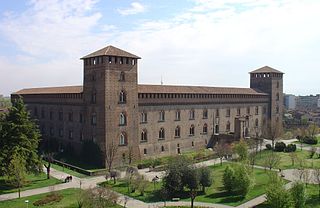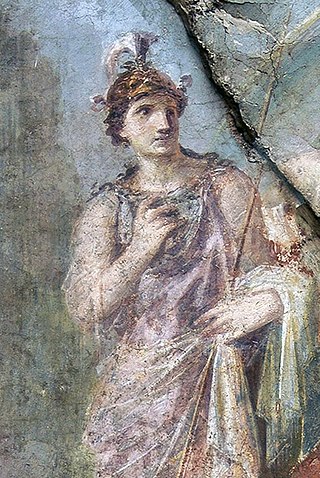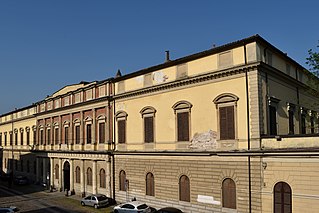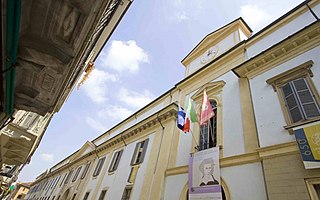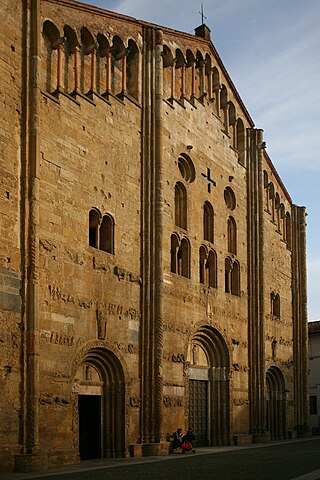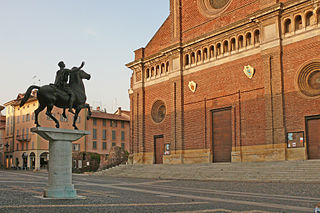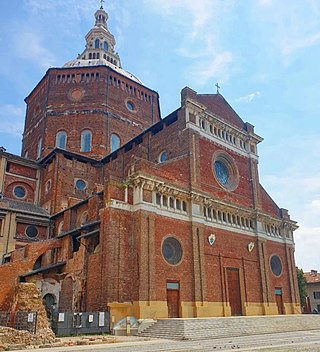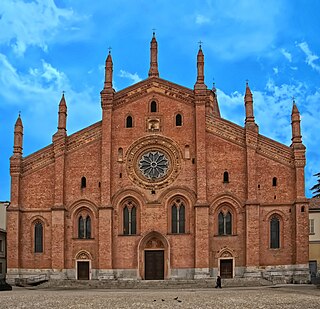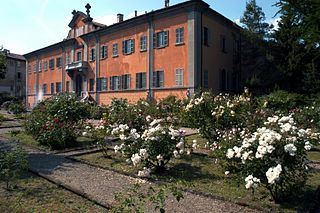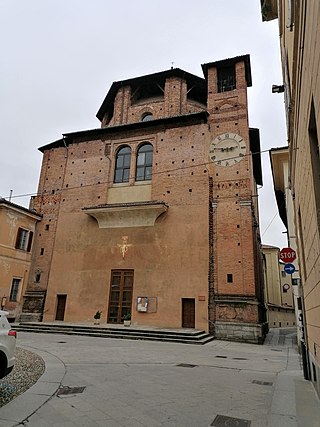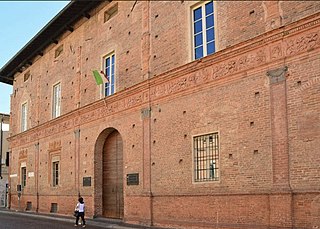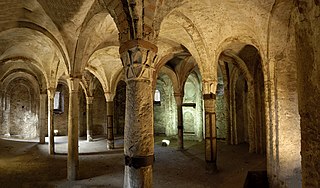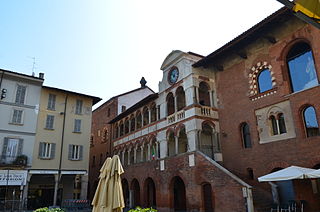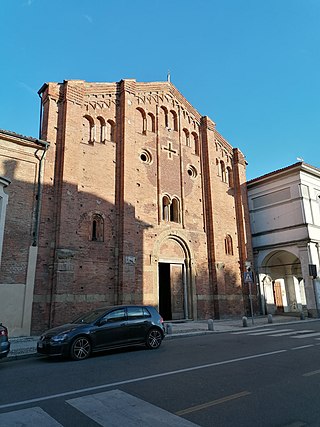15 Sights in Pavia, Italy (with Map and Images)
Legend
Welcome to your journey through the most beautiful sights in Pavia, Italy! Whether you want to discover the city's historical treasures or experience its modern highlights, you'll find everything your heart desires here. Be inspired by our selection and plan your unforgettable adventure in Pavia. Dive into the diversity of this fascinating city and discover everything it has to offer.
Sightseeing Tours in PaviaActivities in PaviaThe Visconti Castle of Pavia is a medieval castle in Pavia, Lombardy, Northern Italy. It was built after 1360 in a few years by Galeazzo II Visconti, Lord of Milan, and used as a sovereign residence by him and his son Gian Galeazzo, first duke of Milan. Its wide dimensions induced Petrarch, who visited Pavia in the fall of 1365, to call it "an enormous palace in the citadel, a truly remarkable and costly structure". Adjacent to the castle, the Visconti created a vast walled park that reached the Certosa di Pavia, a Carthusian monastery founded in 1396 by the Visconti as well and located about 7 kilometres (4.3 mi) to the north.
2. Statua della Minerva
Minerva is the Roman goddess of wisdom, justice, law, victory, and the sponsor of arts, trade, and strategy. She is also a goddess of warfare, though with a focus on strategic warfare, rather than the violence of gods such as Mars. Beginning in the second century BC, the Romans equated her with the Greek goddess Athena. Minerva is one of the three Roman deities in the Capitoline Triad, along with Jupiter and Juno.
3. Basilica San Pietro in Ciel d'Oro
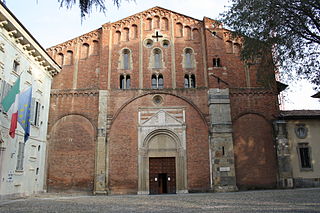
San Pietro in Ciel d'Oro is a Catholic basilica of the Augustinians in Pavia, Italy, in the Lombardy region. Its name refers to the mosaics of gold leaf behind glass tesserae that decorate the ceiling of the apse. The plain exterior is of brick, with sandstone quoins and window framing. The paving of the church floor is now lower than the modern street level of Piazza San Pietro in Ciel d'Oro, which lies before its façade.
4. Museo di Storia Naturale
The Natural History Museum in Pavia, Italy is a museum displaying many natural history specimens, located in Palazzo Botta Adorno. Founded in 1775, it was one of the oldest museums of natural history in Europe. It currently forms the University of Pavia museum network, along with 5 other museums — the University History Museum, Museum of Electrical Technology, Museum of Archeology, Museum Camillo Golgi and Museum of Mineralogy.
5. Museum for the History of the University of Pavia
The University History Museum of the University of Pavia is a museum displaying memorabilia related to the history of the university, particularly in the fields of physics and medicine, when students were taught by prominent scholars such as Antonio Scarpa and Camillo Golgi or the physicist Alessandro Volta.
Wikipedia: University History Museum, University of Pavia (EN), Website
6. Basilica di San Michele Maggiore
The Basilica of San Michele Maggiore is a Roman Catholic church in Pavia, region of Lombardy, Italy. The building, dating to the 11-12th centuries, is a well-preserved example of the Lombard-Romanesque style.
7. Regisole
The Regisole was a bronze classical or Late Antique equestrian monument, highly influential during the Italian Renaissance. It was originally erected at Ravenna, in what is now Italy, but was moved to Pavia in the Middle Ages, where it stood on a column before the cathedral, as an emblem of communal pride and Pavia's deep connection with imperial Rome.
8. Cattedrale di Santo Stefano e Santa Maria Assunta
Pavia Cathedral is a church in Pavia, Italy, the largest in the city and seat of the Diocese of Pavia. The construction was begun in the 15th century on the site of two pre-existing Romanesque, "twin" cathedrals. The cathedral houses the remains of St. Sirus, first Bishop of Pavia, and a thorn purported to be from the Crown of Thorns worn by Christ. The marble facing of the exterior was never completed.
9. Chiesa di Santa Maria del Carmine
Santa Maria del Carmine is a church in Pavia, Lombardy, northern Italy, considered amongst the best examples of Lombard Gothic architecture. It was begun in 1374 by Gian Galeazzo Visconti, Duke of Milan, on a project attributed to Bernardo da Venezia. The construction followed a slow pace, and was restarted in 1432, being finished in 1461.
10. Orto Botanico
The Orto Botanico dell'Università di Pavia also known as the Orto Botanico di Pavia, is a botanical garden maintained by the University of Pavia. It is located at Via S. Epifanio, 14, Pavia, Italy, and is open to the public on weekends. The botanical garden covers an area of about two hectares and has approximately two thousand different species of plants, which are organised in sections. The current director is Francesco Sartori.The Botanical Garden stands in the place where the church of Saint Epiphanius was located, of which it preserves the cloister of the 15th century.
11. Chiesa di Santa Maria Incoronata di Canepanova
Santa Maria di Canepanova is a Renaissance-style Roman Catholic church located in central Pavia, region of Lombardy, Italy. Although in the past the design was popularly attributed to Bramante, the church was designed by Giovanni Antonio Amadeo.
12. Palazzo Carminali Bottigella
Palace Carminali Bottigella is a noble palace built by the ancient Beccaria family from Pavia. The original structure from the Sforza era was built between 1490 and 1499. The façade, which retains the original terracotta decorations, is one of the major examples of Renaissance civil building in Pavia.
13. Cripta di San Eusebio
The church of Sant'Eusebio was a church of Pavia, of which today only the crypt remains. The church was probably built by the Lombard king Rothari (636-652) as the city's Arian cathedral. It later became the fulcrum of the conversion to Catholicism of the Lombards initiated by Theodolinda and the monks of San Colombano and which later received, precisely in Pavia, a great impulse from King Aripert I (653-661) and from Bishop Anastasius.
14. Broletto
The Broletto or Broletto Palace of Pavia, Italy has for centuries housed the civic government offices of this city found in the region of Lombardy, Italy. The term Broletto refers to a buildings equivalent to the town hall or town assembly.
15. Santa Maria in Betlem
The church of Santa Maria in Betlem, founded around 1130, stands in the characteristic district of the Borgo of Pavia, located, after the Ponte Coperto, on the other bank of the Ticino river from the city center.
Share
How likely are you to recommend us?
Disclaimer Please be aware of your surroundings and do not enter private property. We are not liable for any damages that occur during the tours.
